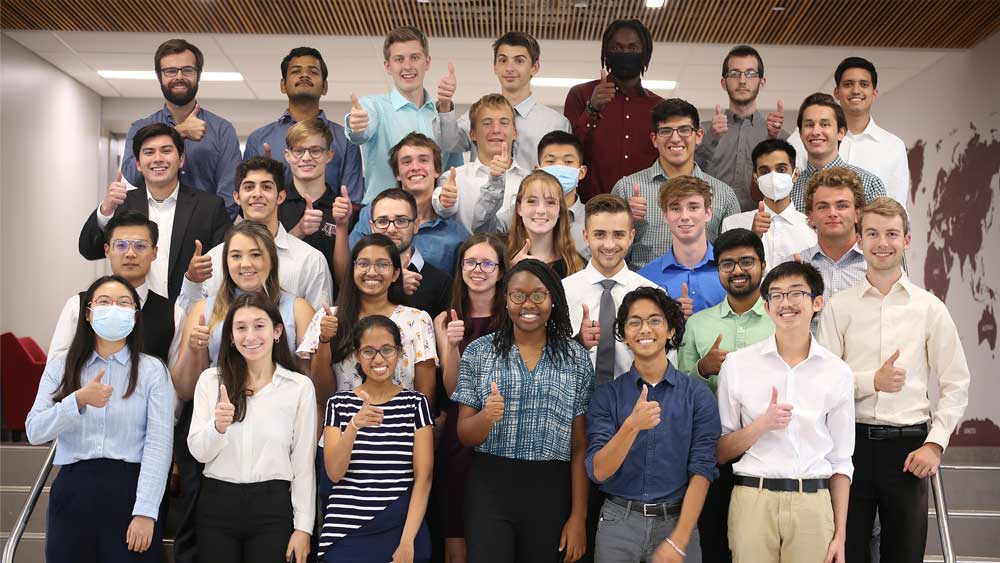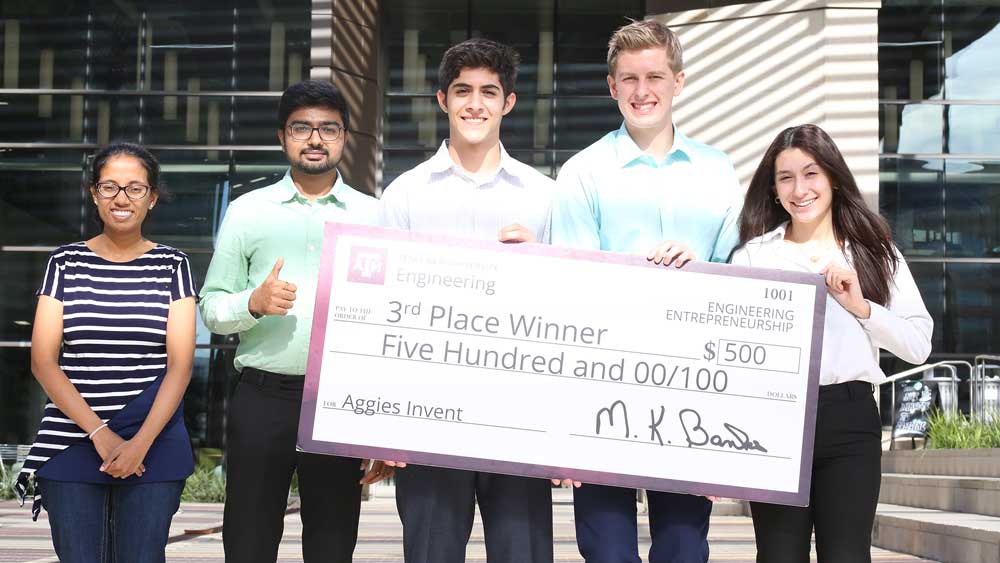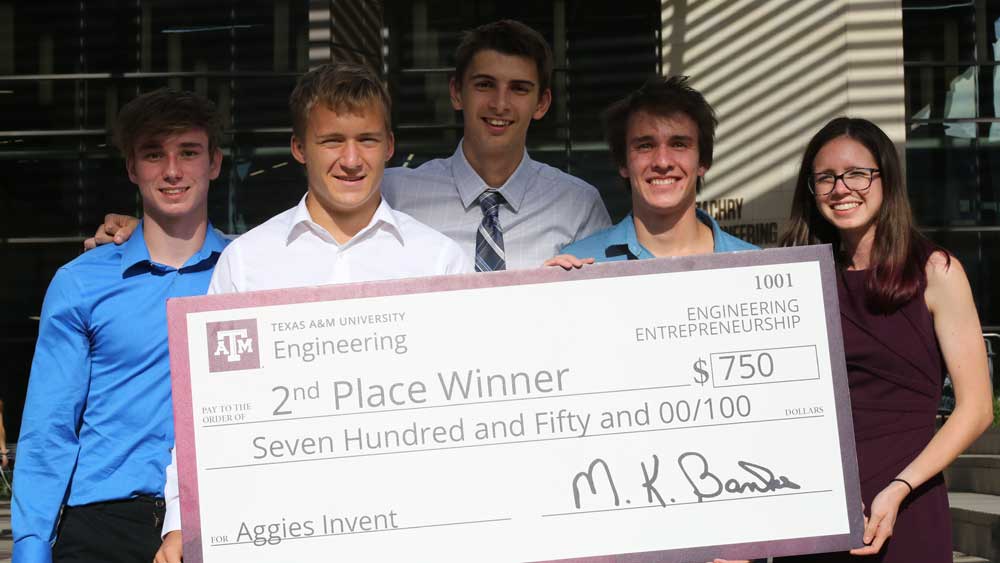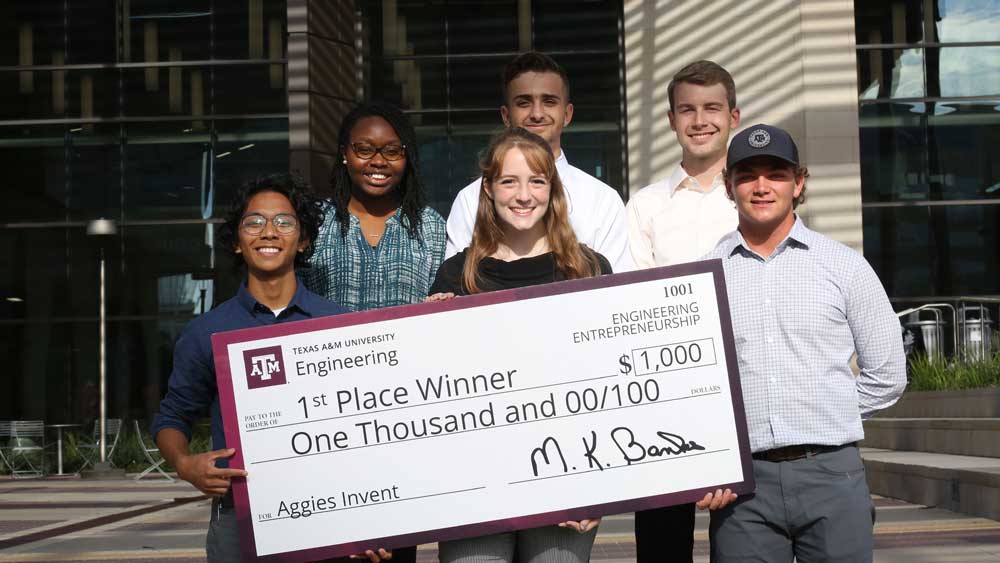
Texas A&M University engineering students recently gathered in person for Aggies Invent, sponsored by Los Alamos National Laboratory. This 48-hour design competition enabled students from all educational backgrounds to form teams and create solutions to combat nuclear threats.
Six very skilled teams developed a solution (some even invented prototypes), a business plan and a sales pitch to present to a panel of judges.
“The fact that these teams came up with some creative solutions in such a short period of time is quite impressive,” said Evelyn Mullen ’88, chief operating officer at Los Alamos National Laboratory and a judge for the event. “I know there were quite a few mentors who also gave time to this event, and their guidance made this an even more positive experience for these talented students.”
The competition is structured to ensure that every person’s voice is heard and their idea is implemented in the final product.
We’re also looking to help all engineers. We want them to develop an entrepreneurial mindset so that they’re able in any situation to understand and think like an entrepreneur to create value. We’re actually addressing both sets of students. Those who want to create startups and those who want to take jobs but think like an entrepreneur inside of a job.
The solutions focused on providing ways to strengthen nuclear security. With only six presentations, the judges struggled to narrow down winners to the top three teams, but when they did, each of the winning teams was given cash prizes.
“I’ve seen the Texas A&M students that take part in Aggies Invent set themselves apart in so many ways,” said Obinna Osourji, consulting manager for Accenture and returning judge.
As always, the competition had a wide variety of students from all different majors and degrees. It offers students a different perspective, personal to every student, on the possibilities of what they can do with their careers.

“As a graduate student, I have a good technical knowledge, but I don’t have any managerial skills,” said electrical engineering master’s student Bengisu Genc. “By working in a group of different majors, I got to know about how we can work together and how we can segregate our work and come back together to make something valuable.”
Genc’s team, Revolve, placed third in the competition and earned $500. Their solution was a dual-access centrifuge that was able to replicate the experiences of the Earth in the course of a nuclear explosion during launch and reentry.

The second-place team, Kraken, created a cryogenic space cooler to keep sensitive tempered sensors cool. The team consisted of returning champs Matthew Coomes, Rachel Simms and Devon Reber, as well as new comers Anthony Lestone and Konstantine Nelson.
“We definitely relied on them for help and guidance,” Nelson commented. “We all worked together as a team; we delegated out things we couldn’t do ourselves to other people who could.”

Comradery is an important value that many of the teams discovered through this experience, especially first-place team Master Blaster, who won $1,000 for designing a shock wave engine to test the survival of infrastructure during earthquakes and nuclear bomb explosions.
“Each one of us was an effective team member and could focus in on one skill that we were very strong in and didn’t have to worry about pulling everything at once,” Montana Welch from Master Blaster said. “We could focus, specialize and conquer.”